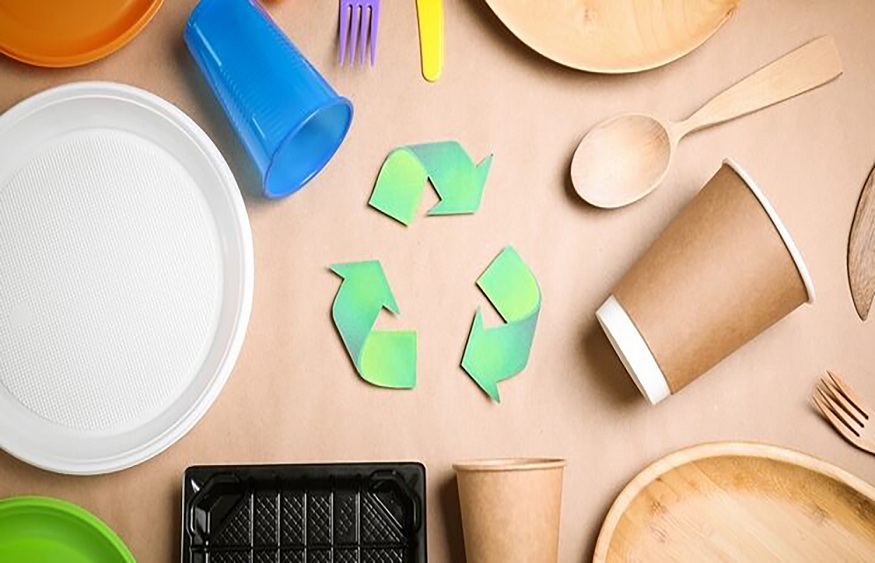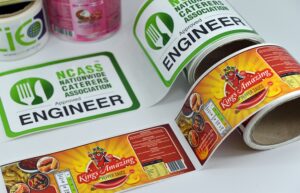Takeaway food has become a staple in many people’s lives. Whether it’s grabbing a quick lunch or indulging in a late-night snack, ordering in is incredibly convenient. However, the containers as well as packaging that takeaway food comes in can have negative environmental impacts if they are not sustainably sourced or recyclable. Thankfully, there are some easy steps you can take to make your takeaway orders more eco-friendly. Here are 5 tips to order eco friendly takeaway containers.
1.Choose Compostable or Recyclable Containers
When ordering takeout, it’s important to consider the environmental impact of the containers as well as packaging that the food will come in. The best option is to choose containers that can be composted or recycled in your local program. This avoids sending single-use plastics to the landfill, where they take hundreds of years to decompose. Look for labels on containers that say “compostable” – these are made from bioplastics like PLA (polylactic acid) that break down naturally in commercial or home compost piles. They will fully decompose within a few months into non-toxic organic matter. Containers with the BPI (Biodegradable Products Institute) logo have been certified as compostable according to scientific standards.
You can also ask restaurants if the plastic or foam containers they use are recyclable curbside. Not all types are accepted – those labeled with recycling symbols #1 (PETE) or #5 (polypropylene) usually are. Choosing these over unmarked plastics keeps more materials out of the waste stream. Opting for compostable or recyclable packaging diverts waste from landfills, where it can pollute the environment for centuries. It also supports restaurants investing in more sustainable options. Don’t be afraid to inquire – many places want to offer eco-friendly choices but need demand from customers. With some research, you can enjoy takeout guilt-free while helping reduce plastic pollution.
2. Avoid Disposable Utensils and Condiment Packets
When you buy biodegradable food boxes, you likely receive a lot of extra packaging like plastic utensils, along with napkins, as well as individual condiment packets like ketchup, soy sauce, and mustard. While these small items may seem insignificant on their own, the total amount of disposable packaging they represent adds up substantially. Every time you order, you could be getting multiple plastic forks, knives, spoons, along with napkins, as well as 5-10 small condiment packets. And in many places, these types of plastics cannot be recycled as well as end up in landfills. To reduce this unnecessary waste, it’s best to opt out of receiving disposable extras whenever possible. Before placing your order, ask the restaurant to omit any plastic utensils, napkins or condiment packets from your delivery.
In most cases, restaurants are happy to fulfill this special request as well as cut down on excess packaging. After all, these items add very little value to your meal experience as well as just become trash. Chances are, you already have reusable utensils, along with napkins as well as larger condiment containers at home that can be used instead of disposables. Keeping a stock of these basics on hand means you’ll never need to accept extra packaging from restaurants. Simply enjoy your takeout food using what you have available. This is one of the easiest ways to significantly reduce packaging waste from each carryout or delivery order. For those times when you do require utensils, look for compostable or recyclable options made from sustainable materials like bamboo that will not end up in a landfill.
3. Request No Receipt
When ordering takeout, one small thing customers can do to reduce waste is to request no receipt when their order is completed. Paper receipts from restaurants, delivery apps, and other food vendors add up to a significant amount of waste. However, most people are not aware of the environmental impact of these receipts. Upon closer look, receipts are actually not as harmless as they seem. Most receipt paper is coated with a chemical called Bisphenol-A, commonly known as BPA. This toxic chemical is used to make the paper resistant to heat as well as able to print receipts quickly.
In addition to containing BPA, receipts also have sensitive personal information printed on them like names, payment details, order contents etc. This means receipts need to be disposed of carefully instead of being recycled or thrown in the trash. However, most people simply toss receipts without shredding. This puts customers at risk of identity theft. By simply requesting “no receipt” when finalizing a takeout order, both of these issues can be avoided. Many delivery platforms as well as restaurants allow opting out of paper receipts digitally. This reduces waste as fewer unrecyclable as well as potentially private receipts are generated.
4. Choose Local and Independent Restaurants
Ordering from local, independent restaurants is better for both the environment as well as community. Small, neighborhood eateries are more likely to use packaging from local suppliers as opposed to large national chains. This cuts down on the transportation emissions from shipping packaging long distances. Independent restaurants also have more flexibility to offer sustainable options like compostable containers. By choosing local takeout, you reduce your carbon footprint while supporting small businesses in your area. Win-win.
5.Request Sustainable Packaging Upgrades
If your favorite takeout spot doesn’t offer eco-friendly packaging by default, don’t be afraid to ask them about more sustainable options. Many restaurants want to be green but haven’t made the switch yet. A simple request can go a long way. You can inquire about compostable or recyclable alternatives to plastic as well as foam containers. You can also ask if they would consider unprinted paper bags as an alternative to plastic bags for silverware or sauces. Most restaurants appreciate customer feedback as well as may be willing to upgrade if they see the demand. Your request could help them make more environmentally-conscious changes.
Conclusion
Making small adjustments like choosing compostable containers for cake decorating items, avoiding extras, opting out of receipts, along with ordering local, as well as requesting sustainable upgrades are simple ways to reduce the environmental impact of takeout. With a little planning, you can enjoy convenient carryout as well as delivery meals while feeling good about minimizing waste and supporting local businesses. Start with one or two of these tips as well as see how they make a difference – every small change helps create a big impact.



